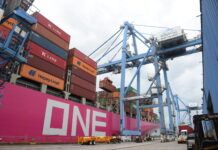There are a lot of things that can send a maintenance turnaround spiraling out of control and cause a plant to miss its mark, both in time and money. The availability of parts, labor, weather and poor productivity are all potential threats, but are they always impactful?
That depends on the level of planning, says Richard Reeves, maintenance manager at Eastman Chemical Co. in St. Gabriel. Reeves joined Eastman more than three years ago and coordinates with a maintenance supervisor, two full-time maintenance planners, a scheduler and year-round turnaround coordinator to manage his plant’s turnarounds.
“The biggest obstacle is poor planning,” Reeves says. “If you don’t plan early enough and don’t plan properly, everything else is affected. You won’t have the materials that you need, and you really can’t recover from that.”
While many companies struggle to hit their goals, Eastman has failed to run long or exceed budget in its last 44 turnarounds. Much of that can be credited to the repetitive, consistent nature of the work, but the local availability of parts—particularly heat exchangers—also plays a role. “Our business rhythm is such that we initiate a turnaround every year,” he adds. “As soon as we finish one, we’re already starting planning on the next one.” That, in turn, minimizes the unexpected and makes the process more predictable.
 Nonetheless, Eastman plans for small surprises along the way and includes an allowance for discovery work. “We typically expect 10 to 15 percent discovery work, so we build in manpower to cover those issues.”
Nonetheless, Eastman plans for small surprises along the way and includes an allowance for discovery work. “We typically expect 10 to 15 percent discovery work, so we build in manpower to cover those issues.”
Shell Chemicals in Geismar hits most of its milestones, even on the larger turnarounds, and gives much of the credit to a unique collaborative approach to planning and execution. The plant also develops a “collective resilience” by practicing the plan during walkthroughs and tabletop drills.
However, Shell’s first step is to address the mindset of the team. Depending upon the size and complexity of the turnaround, that process could begin as early as 12 to 18 months ahead of the project. “That includes everyone leading the effort,” says Ryan Schmidt, Shell’s manager of maintenance and turnarounds. “It starts much earlier than the tactical stuff. While we want to have a high-quality plan, we also understand that we’re going to need to work together in a collaborative manner to address those unplanned things that come up.”
After all, turnarounds are high-stress events with a significant level of complexity and include a host of teams and companies. Everything is coordinated by Shell’s turnaround planning team. “If we go in with the right mindset, and we determine how to make a situation better versus blaming someone else, that creates a positive path forward when those challenges crop up,” Schmidt says.
Chris Vaughn, operations manager at Nouryon in Mobile, Ala., says involving operations in the planning process is also critical. Vaughn, a frequent speaker on the subject, says operations “owns the scope,” so maintenance should work with them to develop a more realistic scope and game plan.
“The first step in a turnaround is to make sure you have a good decontamination and decommissioning plan, and that’s mostly operations that does that,” Vaughn says. “And then you have a small window where you have maintenance contractors, and then you hand it back over to operations again.
“I’ve seen turnarounds where they were derailed from the outset because they didn’t decommission the unit on time. They didn’t decontaminate on time. They didn’t do ‘lock out, tag out’ on time, etc.”
Proverbial monkey wrenches
Some things have little bearing on the overall schedule and budget—minor weather events, discovery work etc.—as a certain number of contingencies are expected. However, more significant events such as local manpower strains, material delivery delays and major weather events pose bigger threats.
“Skilled craftsmen availability continues to be a challenge,” Shell’s Schmidt says. “If you can’t get the number of skilled people that you need to do the work most effectively in an optimal amount of time, that certainly impacts the schedule and the duration of the outage.”
Of course, there are other extenuating circumstances that can put a sizeable strain on the local labor force, such as other area plants having their own turnarounds or capital projects at the same time. “Usually, we have resident contractors that man up when a shutdown happens, and they have pre-negotiated rates with us,” Eastman’s Reeves says.
When that’s not possible, Eastman finds other contractors to fill the need or staggers its turnarounds to avoid hitting peak turnaround periods in the fall and spring. “We’ll do the work in July at times. It’s hot and creates some issues with productivity, but we’re not competing with the other plants.”
Nouryon’s Vaughn says supply chain problems can also throw a monkey wrench into a plant’s turnaround plans.
“I’ve seen supply chain problems push out turnarounds because of raw material availability,” he adds. “I’ve seen it go both ways, where the supply chain has pulled in the turnaround 30 days early, and then where they push it out 30 to 45 days. That’s a critical piece of it, but ultimately they’re a significant partner in the production planning for a site or production unit.”
Having well-established, specific milestones can be particularly helpful, as they can help sidestep and manage unexpected changes as they occur. “Have the resource allocation plan developed and identify your mid- and long-term goals within the turnaround, either by task or by resource allocation,” he adds. “You need to get very granular and have everything visible and open. Also, have daily and weekly meetings to see how you are meeting the milestones that you set.”
That way, a plant can more readily allocate resources should the critical path begin to slip. “You need to have that schedule built and fully defined so you know where all the players are going to be throughout the turnaround,” Vaughn adds. “That’s probably the best way to have that traceability and visibility that you need.”
Nouryon also develops contingency plans and risk assessments to minimize the impact from scope growth or discovery work. Cross-functional team consisting of mechanical integrity specialists, mechanical engineers and process engineers are brought in to perform the risk analysis. “Based off of past history, they might determine a certain risk level for discovery work in a particular vessel,” Vaughn says.
In that regard, discovery work is one variable that Shell Geismar feels it can control, with the help of its exhaustive planning regimen and the digitization of its work processes. “We take the mindset that there should never be any discovery work,” Schmidt says. “We hope to put ourselves in a position where we’re not surprised by anything that we can ultimately control. Certainly, that’s difficult to accomplish, but that’s our vision.”
It can be an attainable goal, he says, given the increasing digitization of the industry, whereby data can be captured and interpreted more effectively. “There’s definitely a connection there,” he adds. “With advancing technologies that give us better data, better analytics, predictability going forward, we feel it’s achievable.”
Change management
From a procedural standpoint, when something is found, most production teams use a well-defined, structured process to submit a request for additional scope. Companies should have a predetermined response pathway when the inevitable happens, as change management is a critical part of the process.
At Eastman, they complete a discovery, or add-on, form that explains what needs to be done and how to do it, along with an estimate of cost and recommendations for a contractor or internal resources. Nevertheless, they expect and assume they’re going to have an additional 15 percent in discovery work. Some hard questions are asked along the way. “Are we exceeding our number of add-ons? Are we where we need to be? And if we’re exceeding that, then I elevate it and started talking to the plant manager,” Reeves says.
Properly managing change ultimately boils down to three priorities—safety, quality and cost. “You have to have them all,” Shell’s Schmidt says. “We’re going to do the work that we need to do to be safe and to be reliable.”










